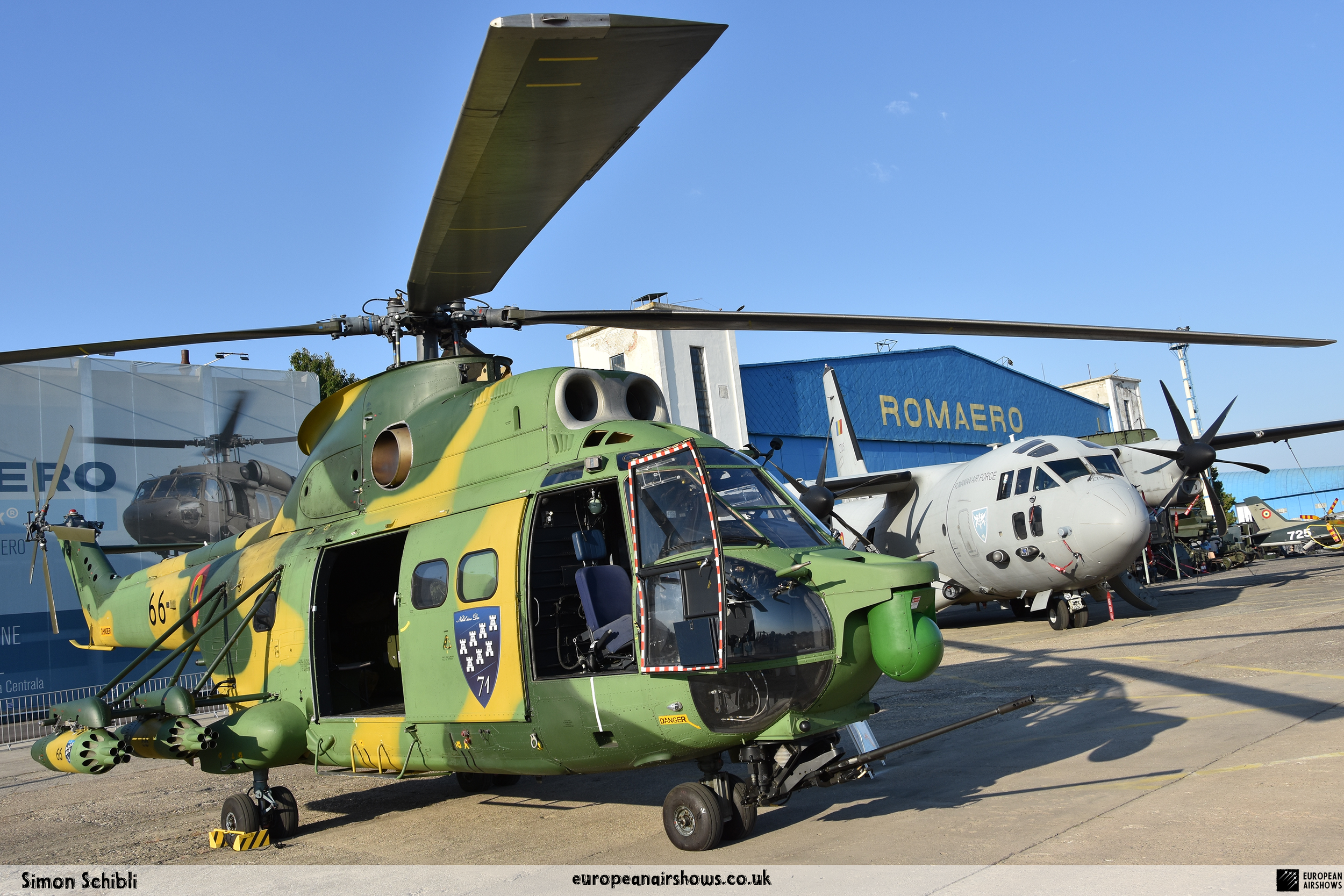
April 15 / Aerospatiale SA 330 Puma first flight
First Flight 15 April 1965
Aerospatiale SA 330 Puma
The Aérospatiale SA 330 Puma is a four-bladed, twin-engined medium transport/utility helicopter designed and originally produced by the French aerospace manufacturer Sud Aviation.
The Puma was originally developed as an all-new design during the mid-1960s in response to a French Army requirement for a medium-sized all-weather utility helicopter. Powered by a pair of Turbomeca Turmo turboshaft engines, it was designed to transport up to 16 seated soldiers, or a maximum of litters with four attendants for casualty evacuation duties, along with carrying up to 2500 kg of cargo either internally or using an external sling. The design of the Puma incorporated several innovations, including an automatic blade inspection system and relatively advanced anti-vibration measures integrated into both the main gearbox and main rotor blades. It was also designed to be capable of operating at nighttime, under inhospitable flying conditions and across a wide range of climates from Arctic to desert environments. The Puma also has an intentionally high level of reserve power to permit effective flight even at its maximum weight with only a single operational engine.
On 15 April 1965, the first prototype performed its maiden flight; the first production standard Puma made its first flight during September 1968. Deliveries to the French Army commenced in early 1969; the type quickly proved itself to be a commercial success. Production of the Puma continued into the 1980s under Sud Aviation's successor company Aérospatiale. It was also license-produced in Romania as the IAR 330; two unlicensed derivatives, the Denel Rooivalk attack helicopter and Atlas Oryx utility helicopter, were built in South Africa. Several advanced derivatives have been developed, such as the AS332 Super Puma and AS532 Cougar, and have been manufactured by Eurocopter and its successor company Airbus Helicopters since the early 1990s. These descendants of the Puma remain in production in the 21st century.
The Puma has seen combat in a range of theatres by a number of different operators; significant operations include the Gulf War, the South African Border War, the Portuguese Colonial War, the Yugoslav Wars, the Lebanese Civil War, the Iraq War, and the Falklands War. Numerous operators have chosen to modernise their fleets, often adding more capabilities and new features, such as glass cockpits, Global Positioning System (GPS) navigation, and various self-defense measures. The type also saw popular use in the civilian field and has been operated by a number of civil operators. One of the largest civil operators of the Puma was Bristow Helicopters, which regularly used it for off shore operations over the North Sea.
The SA 330 Puma was originally developed by Sud Aviation to meet a requirement of the French Army for a medium-sized all-weather helicopter capable of carrying up to 20 soldiers as well as various cargo-carrying duties. The choice was made to develop a completely new design for the helicopter, work began in 1963 with backing from the French government. The first of two Puma prototypes flew on 15 April 1965; six further pre-production models were also built, the last of which flew on 30 July 1968. The first production SA 330 Puma flew in September 1968, with deliveries to the French Army starting in early 1969.
In 1967, the Puma was selected by the Royal Air Force (RAF), who were impressed by the Puma's performance. It was given the designation Puma HC Mk 1. A significant joint manufacturing agreement was signed between Aerospatiale and Westland Helicopters of the UK. The close collaboration between the French and British firms would lead to purchases of Aérospatiale Gazelle by the UK and the Westland Lynx by France. Under this agreement, Westland manufactured a range of components and performed the assembly of Pumas ordered by the RAF.
The SA 330 was a success on the export market, numerous countries purchased military variants of the Puma to serve in their armed forces; the type was also popularly received in the civil market, finding common usage by operators for transport duties to off-shore oil platforms. Throughout most of the 1970s, the SA 330 Puma was the best selling transport helicopter being produced in Europe. By July 1978, over 50 Pumas had already been delivered to civil customers, and the worldwide fleet had accumulated in excess of 500,000 operational hours.
Romania entered into an arrangement with Aerospatiale to produce the Puma under license as the IAR 330, manufacturing at least 163 of the type for the Romanian armed forces, civil operators, and several export customers of their own. Indonesia also undertook domestic manufacturing of the SA 330. South Africa, a keen user of the type, performed their own major modification and production program conducted by the government-owned Atlas Aircraft Corporation to upgrade their own Pumas, the resulting aircraft was named Oryx. In the 1990s, Denel would also develop an attack helicopter for the South African Air Force based on the Puma, known as the Denel Rooivalk.
In 1974, Aerospatiale began development of improved Puma variants, aiming to produce a successor to the type; these efforts would cumulate in the AS332 Super Puma. The first prototype AS332 Super Puma took flight on 13 September 1978, featuring more powerful engines and a more aerodynamically-efficient extended fuselage; by 1980, production of the AS332 Super Puma had overtaken that of the originating SA 330 Puma. Production of the SA 330 Puma by Aérospatiale ceased in 1987, by which time a total of 697 had been sold; production in Romania would continue into the 21st Century.





